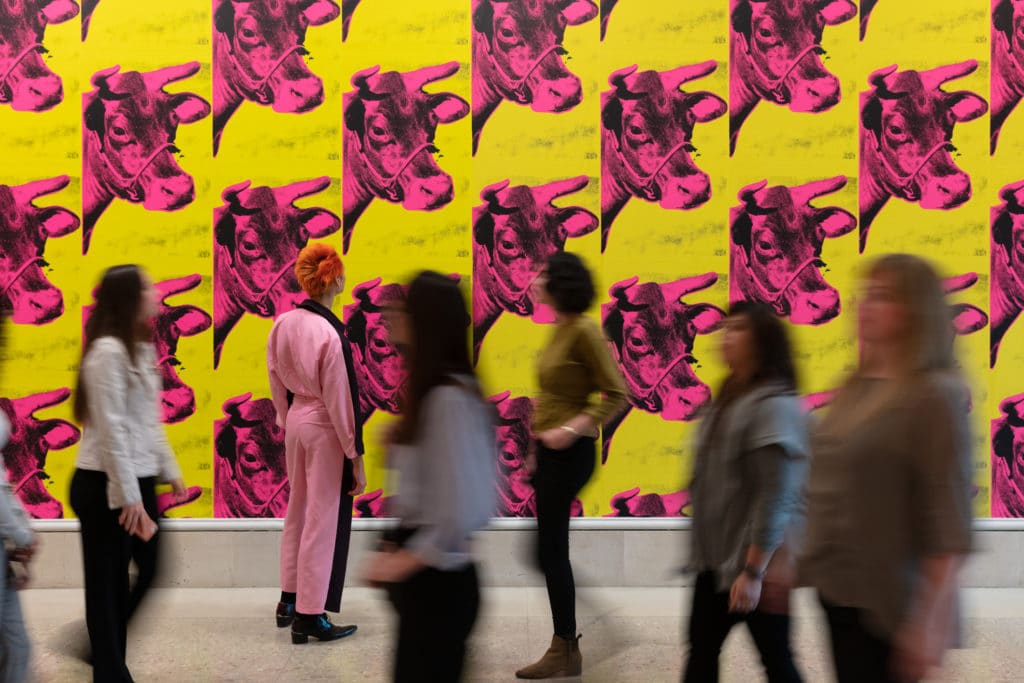MA in WRD alumnus Riley Yaxley graduated this last quarter (AQ19) and has been making a name for themselves in the Chicago art scene. We recently spoke to Riley to learn more about their work in art communications and how they transitioned from the MA in WRD program to a professional writing career that intersects with their passion for art.
Tell us a little about what you’ve been doing since you graduated from the MA in WRD program. We know it hasn’t been long since you graduated, so feel free to include some of the work you were doing while completing your MA as well!
I graduated from the Master’s program in Writing, Rhetoric, and Discourse in November, so my list of recent accomplishments may overlap with the tail end of my studies.
I have continued to freelance write for both Chicago Gallery News and ADF Web Magazine, interviewing Chicago-based artists and curators. My recent articles include:
- Tetsuya Ishida: Self-portrait of Other at Wrightwood 659
- “Mika Rottenberg: Easypieces” at the Museum of Contemporary Art Chicago
- White Sands, Maypole, and the Endless Tumble of Curiosity: Tête à Tête: Embodying Dialogues at the Zhou B Art Center
During my last year in the WRD program, I started working at the Art Institute of Chicago, first as a Data Management Specialist and then as the Development Writer. I was recently nominated to co-chair an equity initiative at the museum along with seven other staff members. As part of this initiative, I help organize museum-wide staff trainings on equity, diversity, and inclusion, facilitate affinity spaces for staff of color, and establish opportunities for museum staff to build relationships and community.
Additionally, I have been nominated as Co-Chair of Advancement for Intuit: The Center for Intuitive and Outsider Art’s Young Professionals Board. In this position, I work with my co-chair to organize the museum’s spring fundraiser benefit and to lead the group’s fundraising initiatives.

What does a typical day “on the job” look like for you?
A typical day “on the job” varies with each day for me! In my current position, I write on behalf of the President and Eloise W. Martin Director of the Art Institute, as well as the Senior Vice President for External Affairs, so my day-to-day is often dictated by their major projects.
Primarily, I produce acknowledgement letters on their behalf for donors who have given gifts of more than $25,000 to the museum. I also write acknowledgement letters for donors who have given gifts of art to the museum.
I also prepare long-form narrative reports in addition to acknowledgement letters. These narrative reports are given to donors who have made remarkable contributions to specific initiatives at the museum or who have established an endowment fund at the museum. Endowment funds typically support curatorial staff, acquisition of art, conservation, education, and countless other activities. I collaborate with staff from across the museum to prepare these narrative reports.
How have you used your experiences from WRD in your current position? How did WRD prepare you for the professional writing world?
Lisa Dush’s professional writing courses Content Strategy and Grant and Proposal Writing were foundational courses for me in the WRD program. Both offered experiential learning opportunities by pairing students with non-profit organizations around Chicago to prepare grant applications and content strategy materials. Since taking these courses, I have written grant applications on behalf of Intuit: The Center for Intuitive and Outsider Art, as well as developing content strategies for HOMEROOM Chicago, a small non-profit I worked for this fall.
Additionally, I use more theoretical coursework such as Julie Bokser’s Feminist Histories of Rhetoric, Erin McKenna’s Social Movement, Social Media, and American Identity, and Peter Vandenberg’s The Essay as guideposts for my freelance writing, activism, and equity work. I also have to thank Jason Kalin for constantly challenging my theories of rhetoric and for introducing me to a vast wealth of new rhetorical theorists.
In addition to working at the Art Institute of Chicago, you also freelance write about art, and in your piece “ART IS… Bittersweet” you mention a burn-out, a falling-in-and-out-and-back-in love with your work. Can you tell us a little bit more about this experience? Do you think this is a common experience, and how do you find balance?
This particular instance of “burning-out” was a result of overextending myself. At the time, I was working somewhere between 4-5 different jobs and/or internships and was going to school full-time. I have since learned that I must have a more sustainable work/life balance. I think that in order to achieve this balance I started taking Baroque and Modern and Contemporary dance classes, as well as taking up painting and sewing classes at the School of the Art Institute. It is important that we make time for pursuits that improve our relationships with our bodies and enrich our lives!
Any advice for current WRD students?
Incorporate your passions into your academic studies at every opportunity that you can! I learned a great deal when I contextualized my learning through my professional experiences and by directing my research to topics that excited me.
